Assessing the Cost of Teacher Professional Development
This tool helps district leaders strategically weigh teacher professional development investments.
Recipe for High-Impact Research

In this blog published by IES, the Edunomics Lab team shares lessons learned about making research more useful for practitioners, including designing visualizations and other tools around user needs to make data accessible, actionable, and impactful.
The Grid: A Framework to Explore Budgeting Choices
This tool helps school, district, and state leaders strategically weigh investments by calculating per-student costs and spelling out desired results, risks involved, and how effectiveness will be measured.
NERD$ Lessons Learned
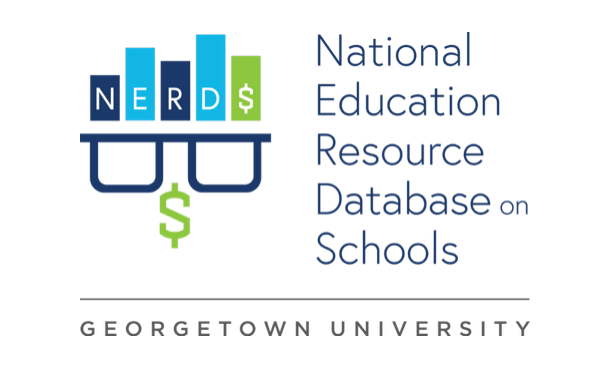
Why NERD$? For decades, large financial datasets captured only district-level spending data. But districtwide averages, whether for performance, spending, teacher salaries, or other data points, mask variation at the school level within districts. As with many other industries and policy areas, the use of aggregated and/or average data in education finance obscures the factors that may […]
A Guide for SEA-led Resource Allocation Reviews
Resource allocation reviews (RARs) in districts that serve low-performing schools offer a new opportunity to examine the connection between resource allocation and academic outcomes. We’ve created guidance documents, templates, and tips to help SEAs prepare for and conduct RARs.
30-Min Webinar: Make it or break it! This spring’s district budget choices matter tremendously for the years ahead.

Never before have district leaders faced such competing priorities: spend down relief dollars in ways that bring value for students, while also bracing for budget gaps unlike any in history. In this webinar we share what we’re seeing in district balance sheets, and outline key issues for this spring’s budget discussions.
Districts face deep financial pain in the next two years. Decisions made this spring will determine how it all plays out.

Marguerite Roza suggests keeping an eye on six critical issues during this spring’s district budget discussions, as decisions made there will determine what happens on teacher layoffs, school closings, program cuts, and more.
The Stakes Are Only Getting Higher For Pandemic School Aid Spending

Higher spending in the final months of ESSER makes for deeper cuts come the 2024-25 school year, writes Marguerite Roza in Forbes. Meanwhile, students are still far behind where they should be.
Let’s Pay Parents to Help With Learning Recovery

Some school districts are flush with cash, but can’t find enough people to fill their open roles. In this Education Week commentary Chad Aldeman asks: what if schools engage families to help make headway on student recovery efforts?
District Budget Decisions & Labor Implications Tracker
This working document aggregated district choices in response to the economic downturn and budget implications related to cuts or labor impacts.
30-Min Webinar: Is it too late for districts to redirect ESSER commitments to tackle learning gaps?

The school year had already started when test scores emerged showing deep gaps in learning. Is it too late for districts to adjust their ESSER commitments to boost recovery efforts? In this webinar we share our latest look at ESSER spending and suggest ways that districts can redirect, and in some cases refocus, their federal relief funds to respond to emerging data on what students need most.
Did public education miss the data revolution?
What data can shed light on whether recovery efforts are working? Are rates of chronic absenteeism coming down? Are students back on grade level in math? District leaders will only know to pivot if they look at the data.
Public Education Missed the Data Revolution. It’s Time to Catch Up
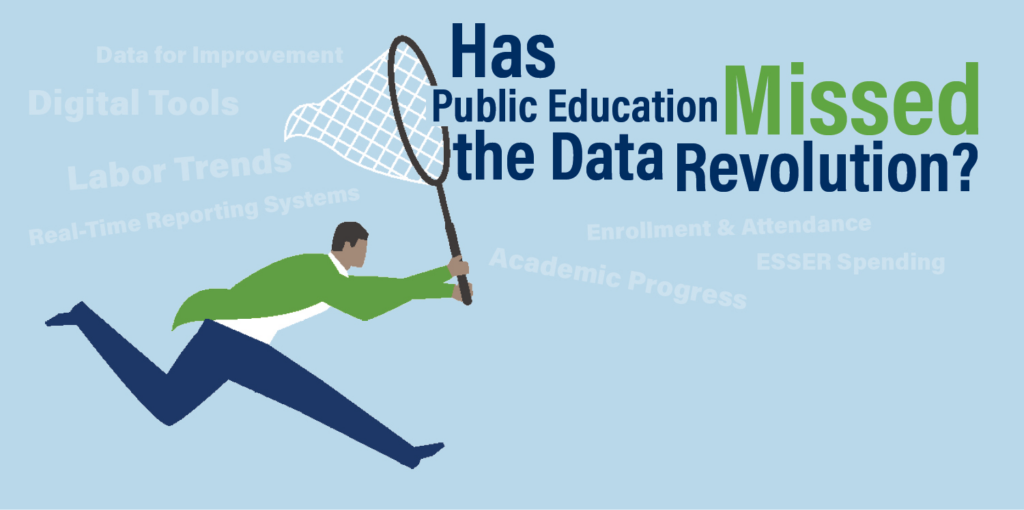
Data-free schooling means the system can’t learn as it goes and improve on what it does. It means students aren’t getting the full value from the nation’s investment in public schooling, write Marguerite Roza and Chad Aldeman. What can be done to chip away at this data desert?
What Goes Wrong When Some School Board Members Don’t Understand District Finances?

A lack of school board financial expertise is especially problematic as members wrestle with the pressures of enrollment declines, inflation, and the temporary nature of federal relief funds, writes Marguerite Roza in Forbes.
30-Min Webinar: The financial forecast is in! School district budgets are headed for a wild ride.

School district budgets are about to be hit by a powerful wave of financial pressures. In this webinar we walk through a mix of factors, explain how – and when – they’re likely to hit district budgets, and discuss how district and state leaders can make smart decisions now to prepare.
ESSER is fueling one-size-fits-all strategies. Let’s use data to deliver more targeted efforts.

The pandemic left schools with mammoth challenges. Using data to zero in on problem hotspots makes tackling them much more manageable. That should happen now, write Marguerite Roza and Ellie Roza, while federal relief money is still on the table.
30-Min Webinar: How can districts measure learning loss recovery costs?

In this webinar we share “The Calculator,” a new tool that estimates lost learning time in more than 8,000 school districts and how much a district would need to invest to get students back on track.
New Learning Loss Calculator Estimates COVID Slide, Costs of Catching Kids Up, in 8,000 School Districts

The Edunomics Lab team used the results from new research to build a calculator tool that estimates lost learning time in more than 8,000 school districts and what it will cost to get students back on track. In this commentary published by The 74, the authors urge district leaders to take stock of where their students are, and invest federal relief dollars now in ways that work for students.
What Are Districts Using Their Federal Relief Money for? How Fast Are They Spending It? How Much Is Left? New Interactive Database Has Answers

Because Congress directed federal relief funds to flow through states, districts file for reimbursement as the funds go out the door. In an analysis published by The 74, the Edunomics Lab team shares early results of tracking the actual spending data, district by district.
Talking about ESSER: Ways to Build Community Trust and Keep the Focus on Results for Students

Laura Anderson and Marguerite Roza map six ways district leaders can communicate about and help make the most of their ESSER investments.
Punishment for Making Hard Choices in a Crisis: Federal Prison

In this Education Next commentary, Marguerite Roza explains why every education leader should care about what happened to Julia Keleher.
Leading Thoughtful Conversations on Resource Equity Using School-By-School Spending Data

This resource guides leaders in using data visualizations to foster thoughtful conversations with different stakeholder groups about financial strategy and management, equity and using dollars to do the most for students.
Ed Finance-Related Datasets: Key Features and Limitations
A list of datasets commonly used in education research and practice focused primarily on finance-related data.
30-Min Webinar: Will We Ever Know How ESSER Is Being Spent?

In this webinar we look at how federal relief money is being tracked and what we’re learning as a result.
An Idea For This Moment: Districts Can Pay Families To Help Get Students And Schools Back On Track

Sharing a portion of federal relief funds with families offers school districts a chance to re-engage students and parents and sends a message that they are valued partners in solving problems that directly affect them, writes Marguerite Roza in Forbes.
The scarcity mindset that plagues education news

Education finance is a messy topic for journalists, and this last year has made it especially hard to neatly summarize the issues. at Kappan, Chad Aldeman cautions that reporters who focus exclusively on questions of scarcity may perpetuate a false narrative and miss the biggest education finance story of the last decade: How are district leaders spending their new financial windfalls, and what effect is it having on students?
Existing Federal Provisions Can – If Given Appropriate Attention – Advance Within-District Financial Equity

Four existing federal provisions have potential, if made a priority, to work together to foster within-district financial equity, write Marguerite Roza and Hannah Jarmolowski.
Maintenance of Equity: A New Provision with Big Implications for District Budgeting

Chad Aldeman and Marguerite Roza explain how an expansive interpretation of a new federal provision could have unintended consequences.
What will MoEquity mean for district budgets?
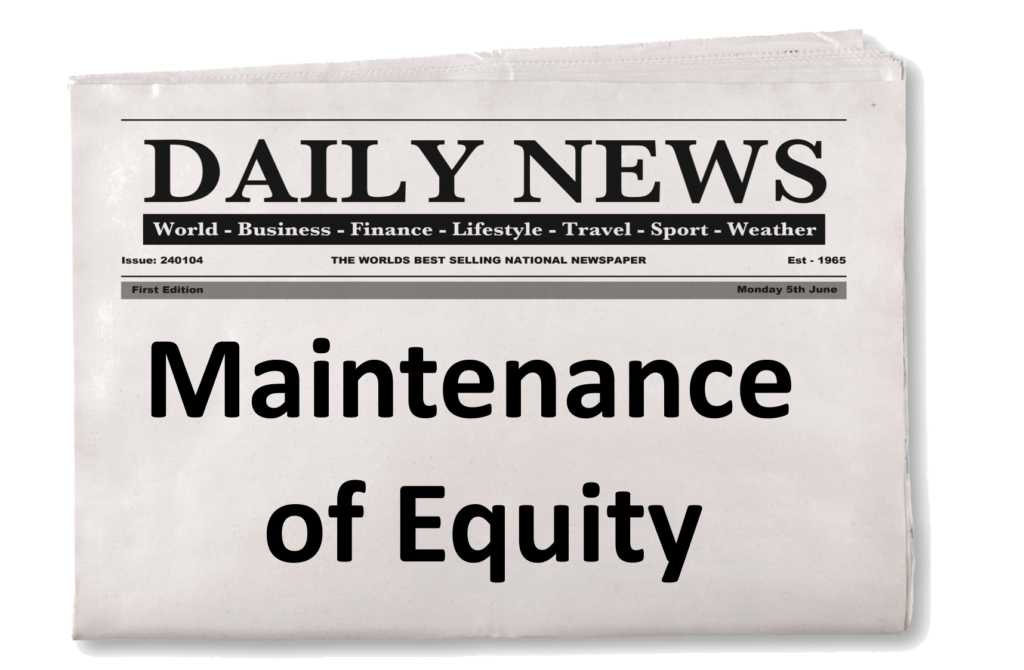
In this webinar Marguerite Roza and Chad Aldeman discuss the new guidance for the maintenance of equity provision and what it would mean for districts faced with implementing it.
Communication Template for Principals on Use of Federal Relief Funds

Based on messaging research on how district staff, principals, teachers, and parents engage with and react to information about school finance, this template will help principals engage their community in a way that cultivates trust and helps make the most of the federal relief dollars.
Will the American Rescue Plan’s ‘Meaningful Consultation’ Requirement Usher in Community Participation in School Budgets?

In Forbes, Marguerite Roza writes that the federal requirement for “meaningful consultation” on the use of ARP funds sounds like a call for participatory budgeting, and wonders whether it could prompt a new level of civic engagement in school spending.
30-Min Webinar: Teacher Labor Market Trends and What They Mean For District Budgets

In this webinar, we share what we’re learning from the data on teacher turnover and discuss how the current fiscal conditions should inform staffing and salaries as districts navigate budget and hiring season.
Teacher turnover, NERD$ & more
We’re excited to announce NERD$: National Education Resource Database on Schools, the first-ever national set of school-by-school spending data. Captured for research and comparisons, these data have potential to transform our understanding of ed finance.
School Spending Data: A New National Data Archive

This paper introduces a new national data archive that will capture year-over-year school-by-school spending figures reported by each state and enable easier cost-benefit analysis and new research on equity, innovation, and productivity at the school level.
Financial Leadership: Meeting This Moment

This article in School Business Affairs magazine illuminates the critical need to develop district leaders’ strategic finance skills.
Analysis: California Gives Districts Extra Money for Highest-Needs Students. But It Doesn’t Always Get to the Highest-Needs Schools

In this analysis, Katie Silberstein and Marguerite Roza studied whether funds allocated by California’s Local Control Funding Formula actually made it to the highest-needs schools.
Use caution, district leaders: Even in a pandemic, there’s no immunity from financial missteps

In this Thomas B. Fordham Institute article, Marguerite Roza warns that district leaders may be at a higher risk for accusations of financial missteps.
ED Surprises SEAs with New Data Release

In this blog published by the National Center, Marguerite Roza discusses efforts to make new school-by-school spending data easier to find, interpret, and use.
A Moment of (Early) Truth: Taking Stock of School-by-School Spending Data
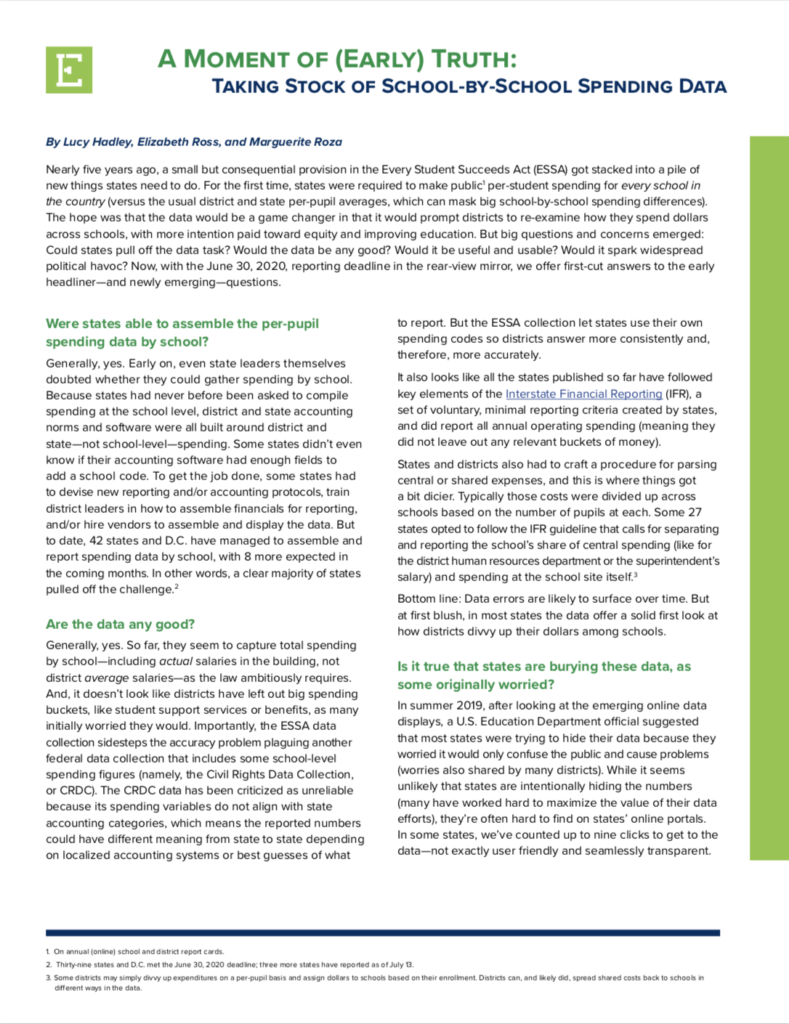
This brief offers first-cut answers to early concerns and newly emerging questions about new state reporting of per-pupil spending data.
Straight Talk In Financially Uncertain Times: How District Leaders Can Communicate About The Messy Financial Landscape Coming Their Way

In this guest blog post, Laura Anderson and Marguerite Roza share how district leaders can best communicate financial decisions to their staff and communities in order to build trust.
New Financial Data Spotlight the District Role in Distributing Dollars Across Schools

In this Education Next article, Marguerite Roza and Laura Anderson share what we’re learning from early explorations of the data and the opportunities it provides for education leaders.
Edunomics Lab against the tide: Yes, eliminate CRDC finance elements

When the U.S. Department of Education proposed significant changes to the Civil Rights Data Collection, we broke with many of our peer organizations to write in support of eliminating the school finance portion.
Engaging principals in school-level financial data to boost student achievement

During the Council of Great City School’s fall conference in 2019, Cleveland Metropolitan School District, and Edunomics Lab shared insights using school-by-schools spending data and a framework for engaging school leaders in leveraging dollars for the greatest outcomes possible.
Webinar: The Changing Role of Education Finance Leadership
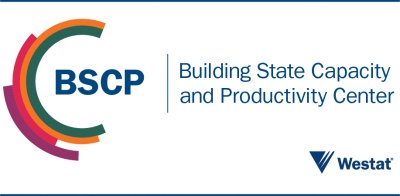
This webinar explores connections and opportunities with ESSA’s financial transparency requirement, the new Supplement-not-Supplant requirement for a district “resource allocation methodology” and “resource allocation reviews,” and what each means for states and districts.
A Way to Get School Finances Back Under Control

This commentary lays out why it may be time for states to establish agencies modeled on the federal Government Accountability Office (GAO) to certify school district obligations before they take effect and push districts into financial crisis.
Training School Leaders to Spend Wisely

This article in Education Next shines a light on the pressing need to better support district and school leaders in their work on the spending side of the equation.
Understanding school finance is one thing. Being effective in communicating about it is another skill entirely
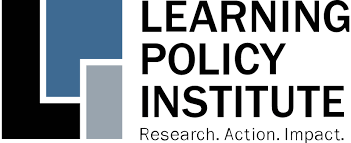
This article provides tips for school, district, and state leaders to communicate effectively about school finance issues—whether the topic is a state funding formula, a local tax levy, teacher salaries, or spending on athletics—and build much-needed trust and understanding in the process.
Webinar: Taking Stock as SEAs Begin Releasing Per-Pupil Spending Data

In this webinar, Marguerite Roza and Katie Hagan examine school-by-school expenditures in states where data are available. They share how leading states are incorporating financial transparency data in school and district report cards and discuss what can be learned from these early adopters.
New Education Department guidance on supplement-not-supplant: Sorry not sorry

In this Brookings Chalkboard blog post, Marguerite Roza discusses new U.S. Department of Education guidance on monitoring the “supplement-not-supplant” (SNS) provision of Title I.
Equipping School Leaders to Spend Wisely

In this article in the National Association of State Boards of Education journal, The Standard, Marguerite Roza writes that financial transparency presents state boards of education with a timely opportunity to turn the tide on local leader training.
A Checklist to Guide Data-Visualization Decisions

This checklist will help SEAs determine what they hope to accomplish with their financial transparency reporting and which data elements to include in order to answer a range of critical questions.
Interstate Financial Reporting

Interstate Financial Reporting (IFR) was created by states, for states, to meet the financial data reporting requirement under ESSA—and maximize the value of their efforts. Based on a set of voluntary, minimal reporting criteria, IFR is designed to produce data that have common meaning and can be used to make valid, apples-to-apples comparisons of school-level per-pupil expenditures across states nationwide.
Four Approaches to Assigning Costs to Central Levels vs. School Levels When Calculating Per-Pupil Expenditures

With ESSA requiring states to collect and report school-level per-student expenditures, state education agencies are considering setting statewide rules for assigning expenditures to the district or school level. In this brief, we map four approaches states can take and weigh benefits and considerations for each.
School Level Finance Survey Converter Tool
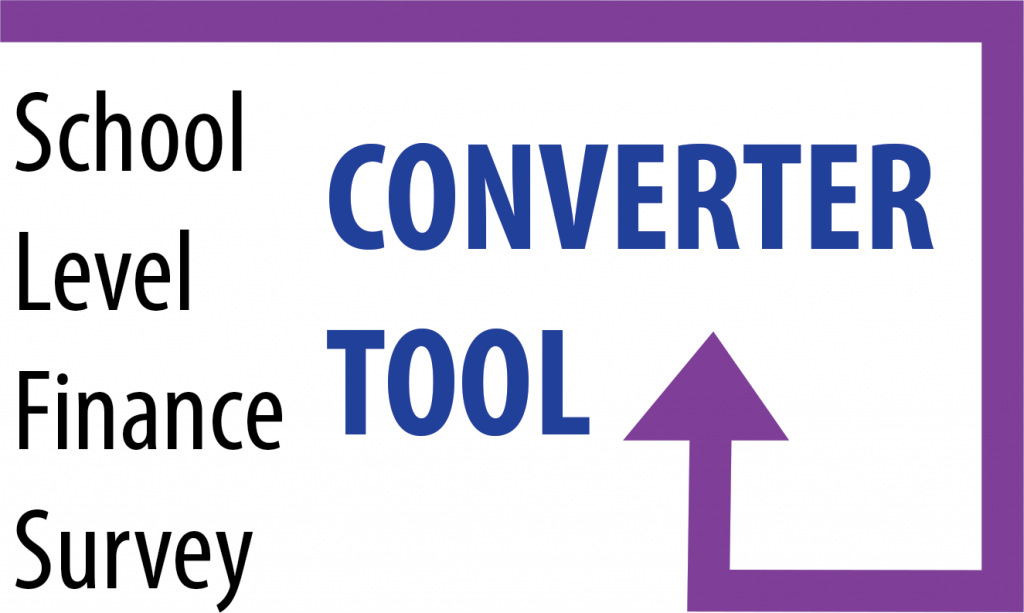
This downloadable tool helps states combine data from two existing federal surveys to calculate school-level per-pupil expenditures for all schools and districts in their survey files and meet the new financial transparency requirement under the Every Student Succeeds Act.
Webinar: What does the ESSA financial transparency requirement mean for districts?

This webinar provides an overview of the financial transparency requirement in the Every Student Succeeds Act, highlight lessons learned from states working toward meeting the requirement, and provide a district lens for thinking about the opportunities this new data can provide.
Financial Transparency Reporting Requirement: Where to start

In this brief we describe our work with 22 state education agencies to identify data readiness to meet the financial transparency reporting requirement under the Every Student Succeeds Act (ESSA) and outline the inventory processes so other states can identify their own next steps to meet the requirement.
The Productivity Opportunity: A Role-Playing Activity to Engage Leaders in Financial and Outcomes Data
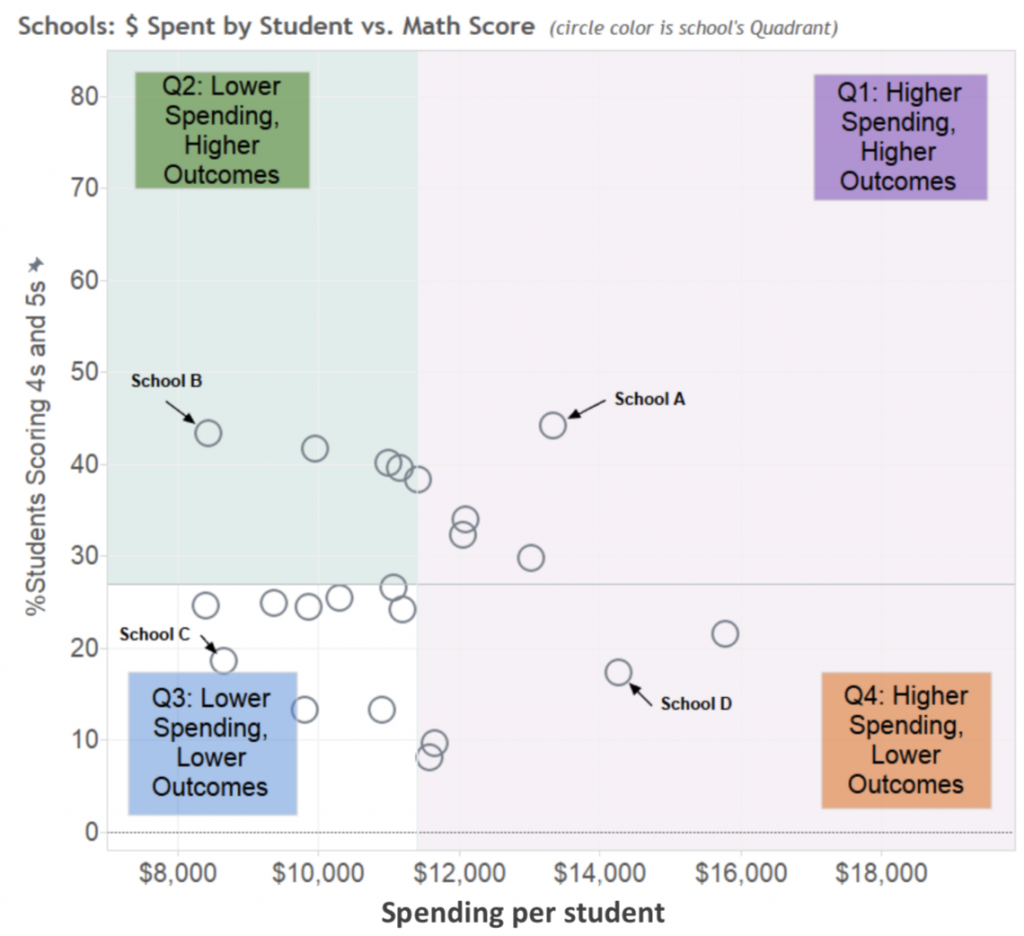
This document offers a set of exercises designed to help education leaders better understand the relationship between spending and student performance—and position them to use emerging data to explore opportunities for productivity in their day-to-day work improving education.
With New Data, School Finance Is Coming Out of the Dark Ages

In this blog and podcast, Marguerite Roza explains how a sleeper provision in the Every Student Succeeds Act (ESSA) will serve up a motherlode of new school-level financial data, offering an unprecedented opportunity to be better equipped to tackle some of education’s most pressing issues.
New Era of School Finance
In 2016 we convened leading authorities to discuss the complexities of education finance in light of the new Every Student Succeeds Act. Watch Marguerite Roza’s research presentation, US Secretary of Education Arne Duncan’s keynote, and an expert panel discussion of the shifting roles in education finance decisions.
A State Information System to Support Improvements in Productivity

In this paper, we discuss how states can (and why they should) track and share school-level outcomes relative to school-level spending in their online information systems. Some schools are far more productive than others—getting better student results for less money—yet states are not yet routinely identifying such schools.
Funding for Student’s Sake: How to Stop Financing Tomorrow’s Schools Based on Today’s Priorities
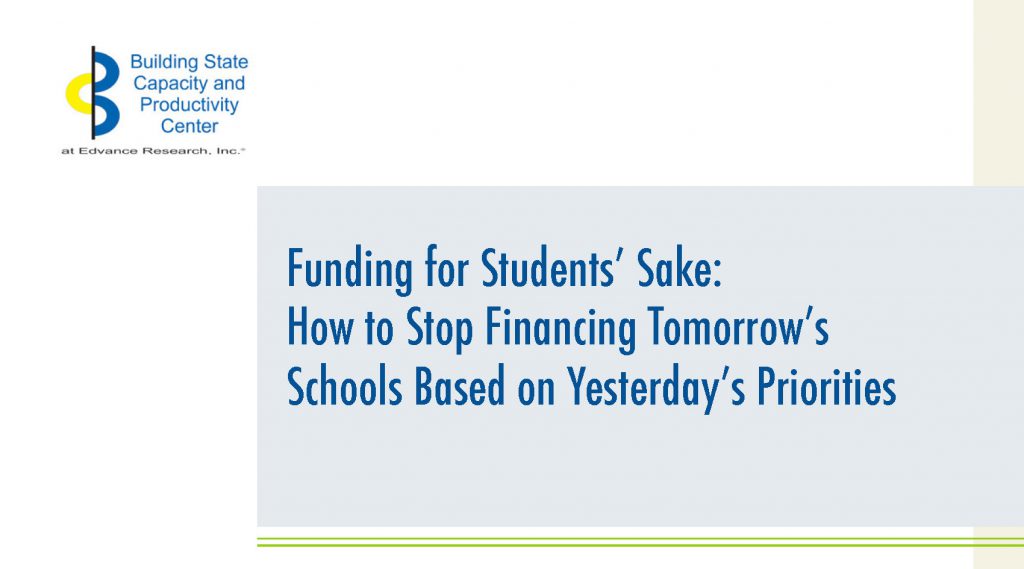
Most states make major changes in their allocation models only every two decades or so. In this paper, we explore how states can make the most of their redesign to get better outcomes for the money.

